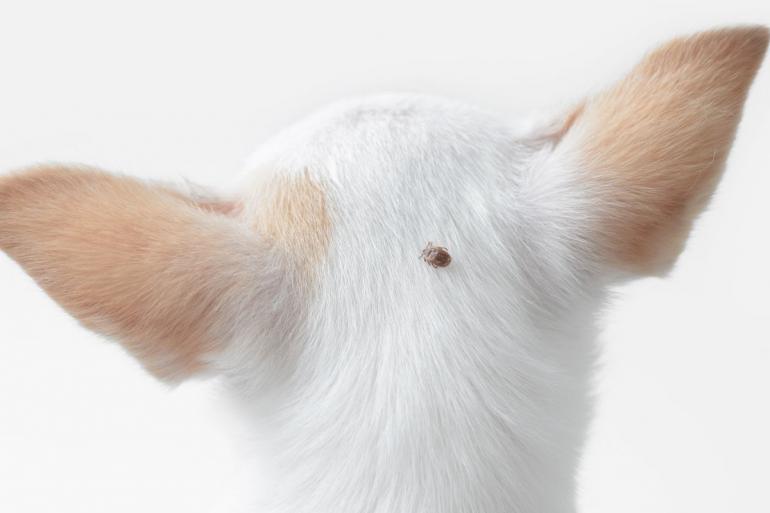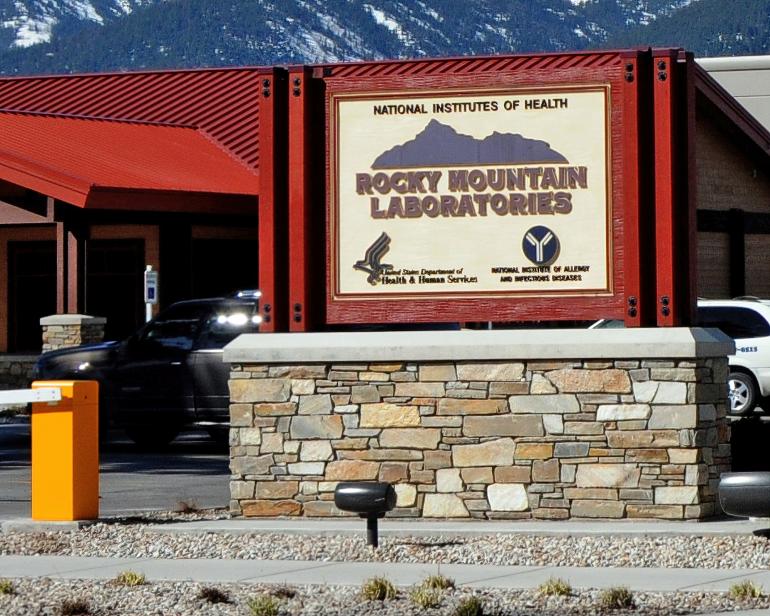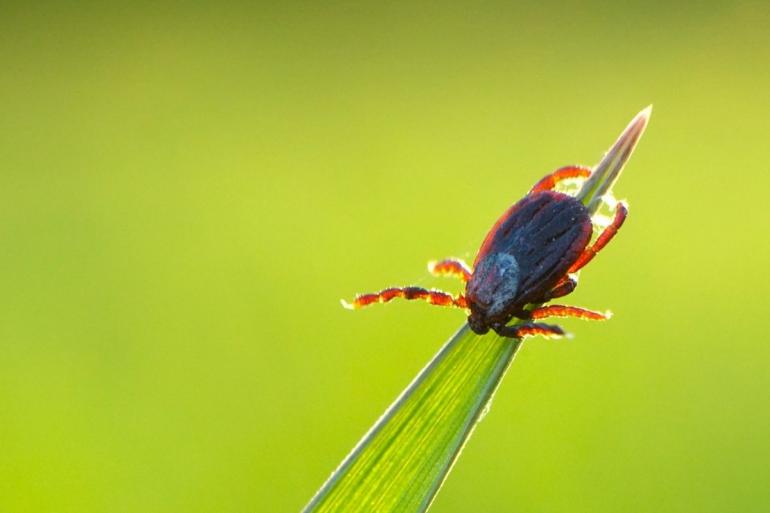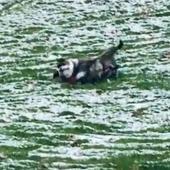Spring, Ticks and Montana’s Rocky Mountain Labs

Springtime is tick season in Montana. It is just a fact of life that we have to tolerate in exchange for the privilege of living here.
There are approximately 90 species of ticks found throughout the US. We are home to the infamous "Rocky Mountain wood tick." Ticks seem to freak a lot of people out, probably because they are parasites and like to burrow their heads into the skin for blood. Mosquitos go after the same thing, using a microscopic hypodermic needle, but it is easy to just swat them and flick them off your skin. Ticks need a little extra work if you give them the chance to attach. Let's face it, the sight of a feeding, engorged tick is just gross. It is always prudent to check oneself and your four-legged hiking companions for ticks after being out in our beautiful Montana high country.
There are many online resources about protecting yourself from ticks and what to do if you find one "feeding" on you or your pet.
As with any insect that seeks a blood meal, ticks can be a vector for diseases. The most common tick-borne disease in these parts is Rocky Mountain Spotted Fever (RMSF). It is is a bacterial disease and typically begins with a fever and headache, which can be followed a few days later with the development of a rash. The rash is generally made up of small black bleeding spots and starts on the wrists and ankles. It can be lethal in some cases if not treated. Sounds lovely, doesn't it?

Although the Rocky Mountain wood tick is found throughout the Rockies, the west side of the Bitterroot Valley, especially around Hamilton, was a real hot spot for the disease at the turn of the Twentieth Century. This rash gave rise to the local name "black measles," and its fatality rate was about 80%. This was justifiably a serious concern to the Bitterroot Valley at that time, and local residents appealed to the state for help.
Such dramatic medical issues tend to attract researchers to investigate causes and design cures. Enter Dr. Howard Tayler Ricketts - a young pathologist from the University of Chicago, who in 1906, showed that the disease was transmitted by the bite of the Rocky Mountain wood tick (Dermacentor andersoni). He returned each summer to western Montana to continue his work. He worked in tents set up in the yard of the Northern Pacific Hospital in Missoula. By 1909, he had isolated the bacterial organism responsible for spotted fever, and that organism was later named Rickettsia rickettsii in his honor. Ricketts left for Mexico in 1910 to fight a typhus outbreak there, succumbing to the disease himself soon after.
Those who followed worked out of cabins and farmhouses, and even a woodshed for a time. Finally, in 1921, an abandoned schoolhouse on the west side of the valley was rented and became known as the "Schoolhouse Lab," where the first vaccine was produced by grinding up tick tissue. Yum!
By 1928 a true "brick and mortar" lab was built on the west side Hamilton. Known as "Building 1", this building is still in use today. In 1932 the federal government purchased the lab from the state of Montana and transferred it, as well as many of its employees to the federal Public Health Service.
In 1937, Rocky Mountain Labs (RML) became part of the National Institute of Health (formed in 1930). During World War II, the laboratory produced vaccines to protect soldiers against spotted fever, typhus, and yellow fever. After the war, work at the lab returned to its primary mission of basic scientific research of infectious diseases. In 1948, the National Institute of Health was reorganized, and RML became part of what is now called the National Institute of Allergy and Infectious Diseases (NIAID). This is the same Institute led by the now well-known Dr. Anthony Fauci.

Today, RML scientists investigate a wide variety of infectious diseases, including the study of chronic wasting disease, chlamydia, Q-fever, tularemia, Salmonella, Staphylococcus, Lyme disease, relapsing fever, and plague, and others. Its state-of-the-art laboratory facilities allow scientists to use advanced science and technology in their quest to protect people from emerging infectious diseases.
From its very humble, rural beginnings in the early 1900s, RML has grown to become a prestigious, world-class, world-recognized research lab here in Montana, and it all began due to the prevalence of our local, little springtime "friend" - the Rocky Mountain wood tick.
More details on the history, mission, resources and other facts about RML, along with interesting historical photos can be found here:






Leave a Comment Here